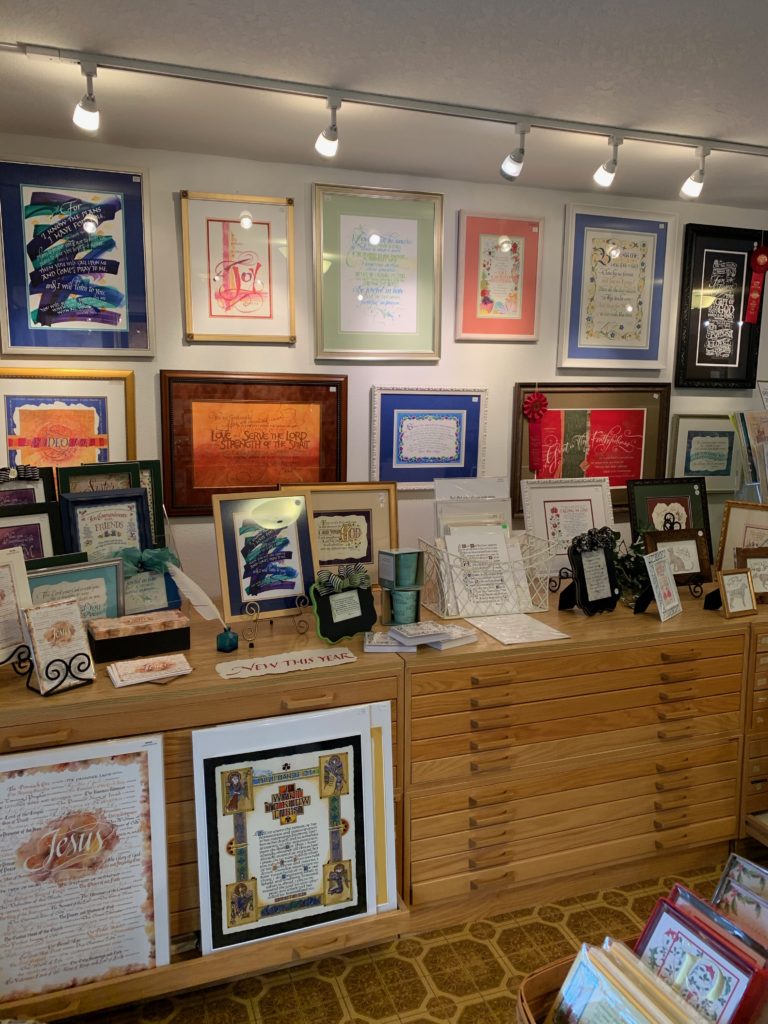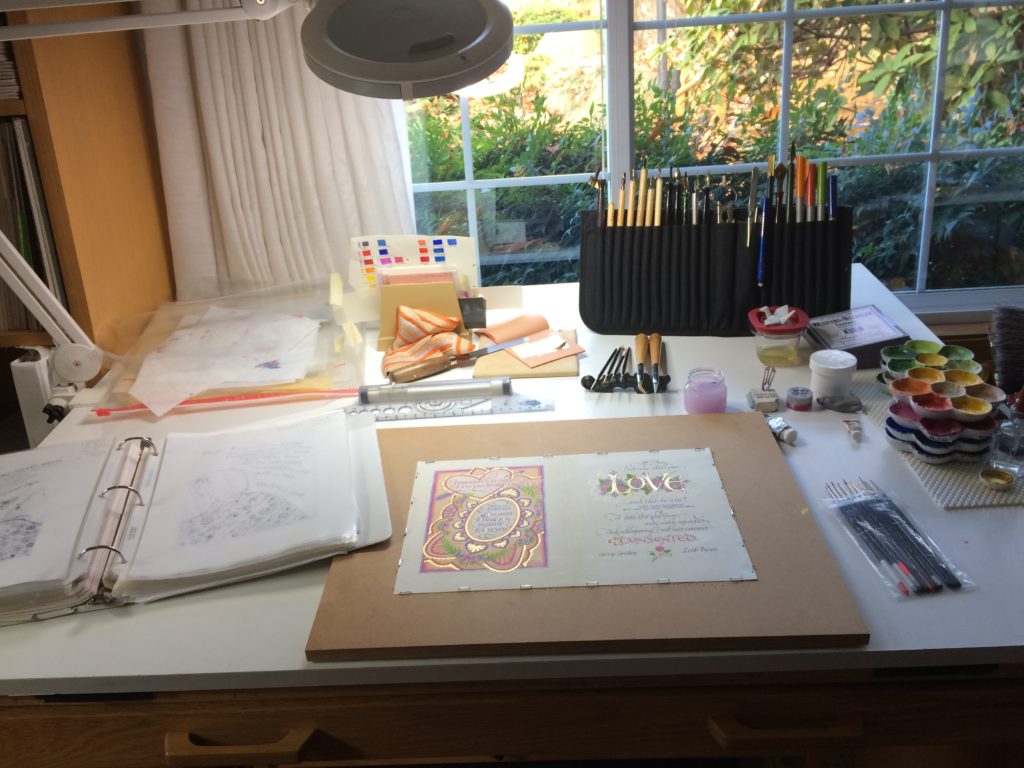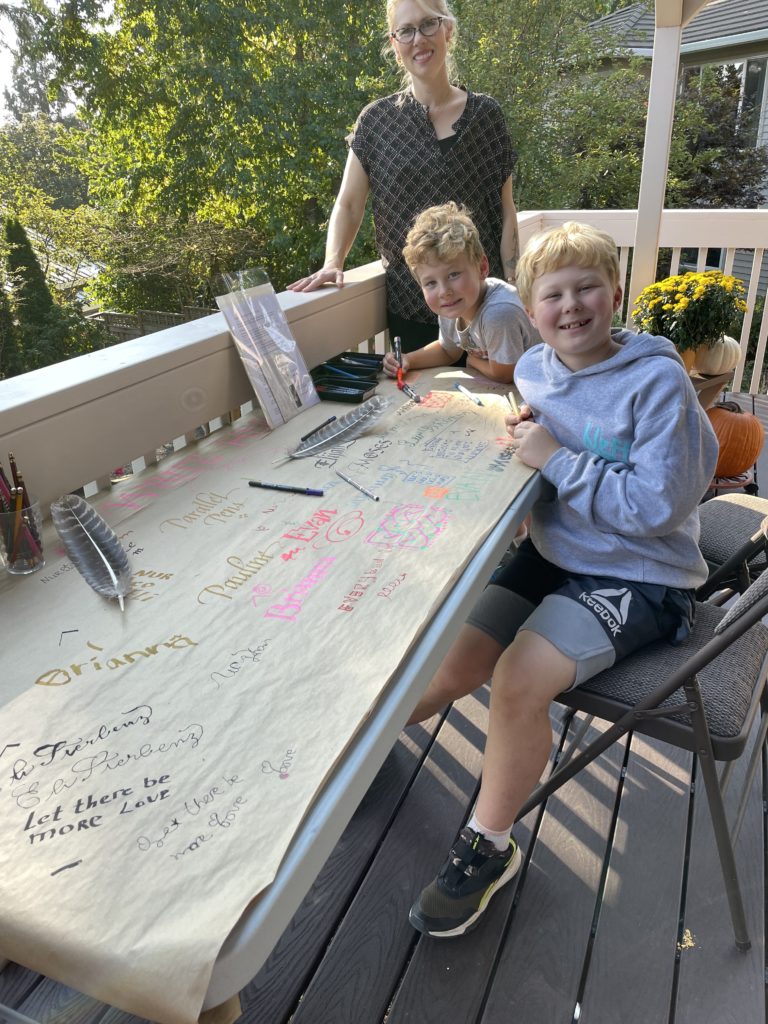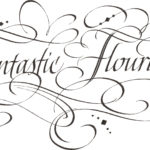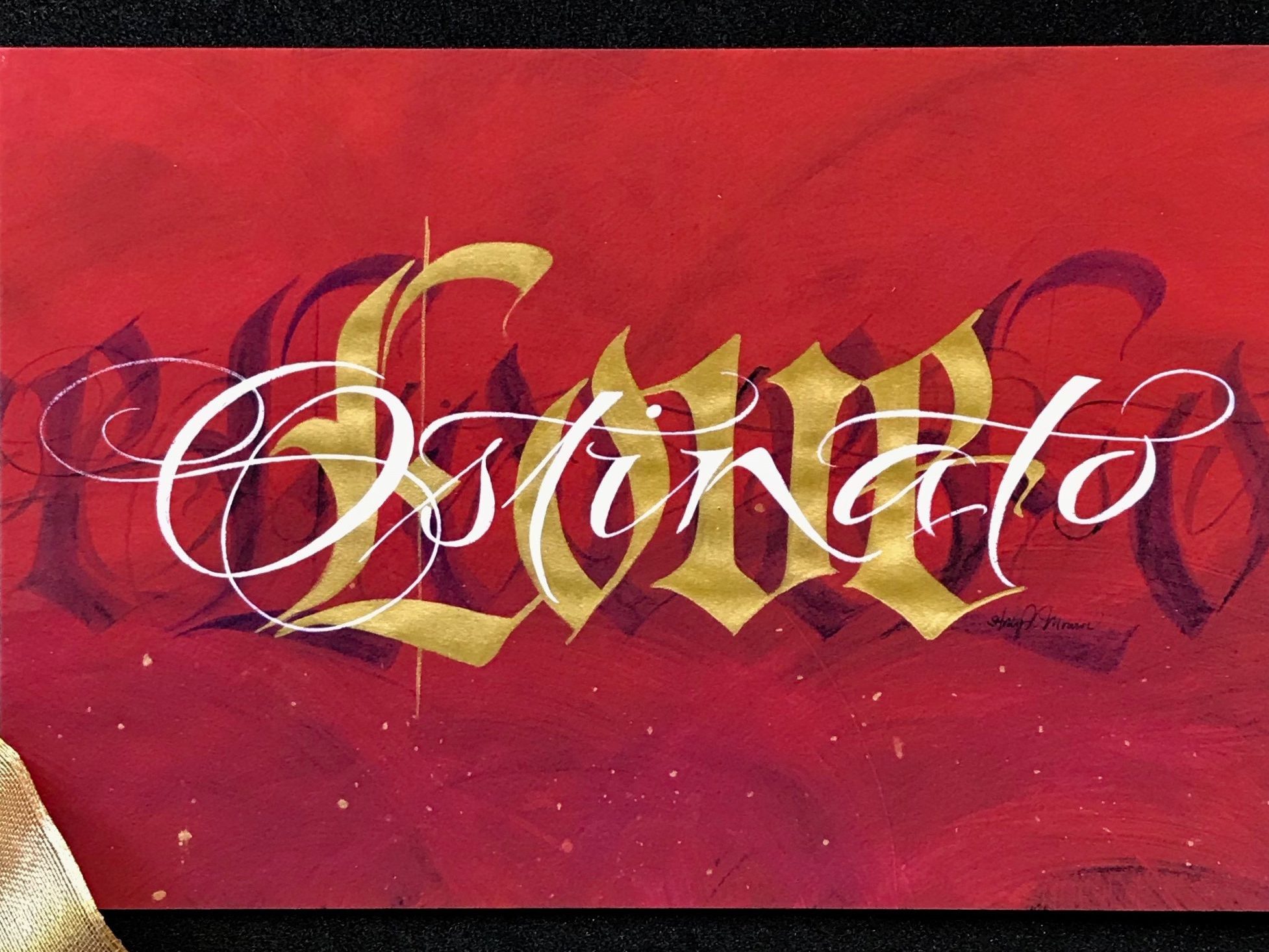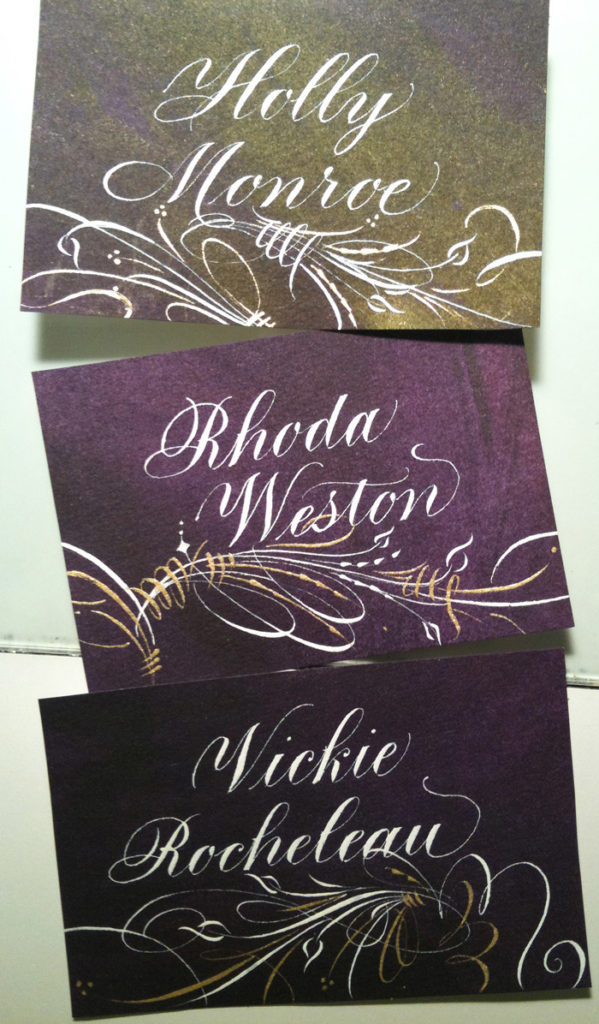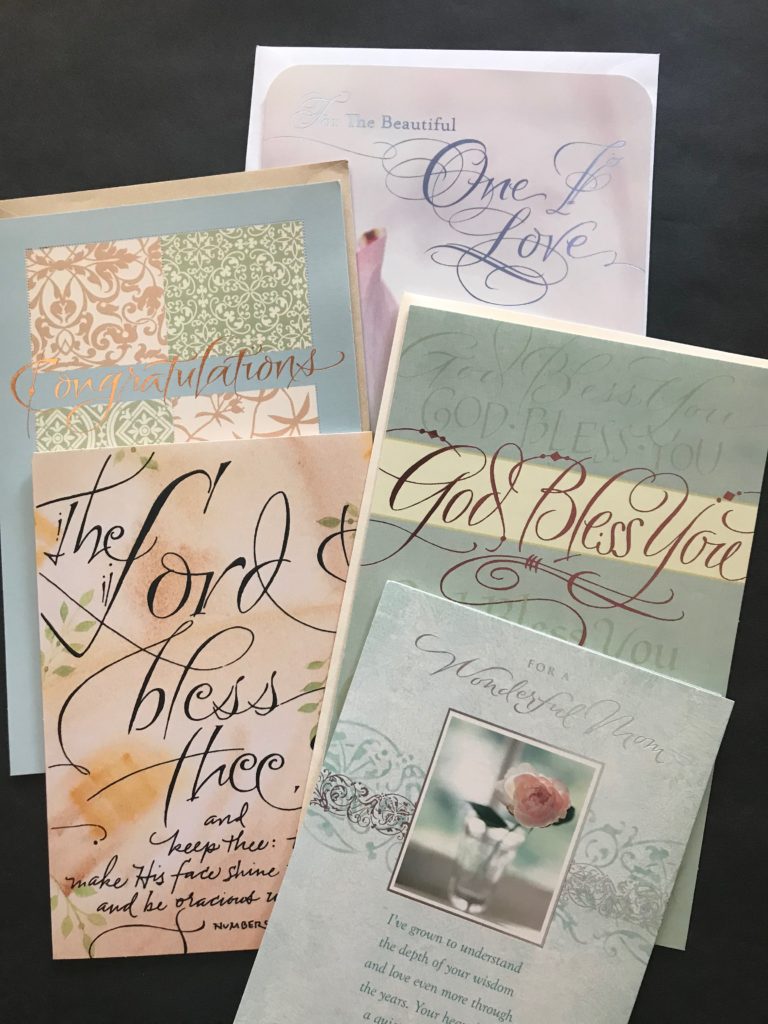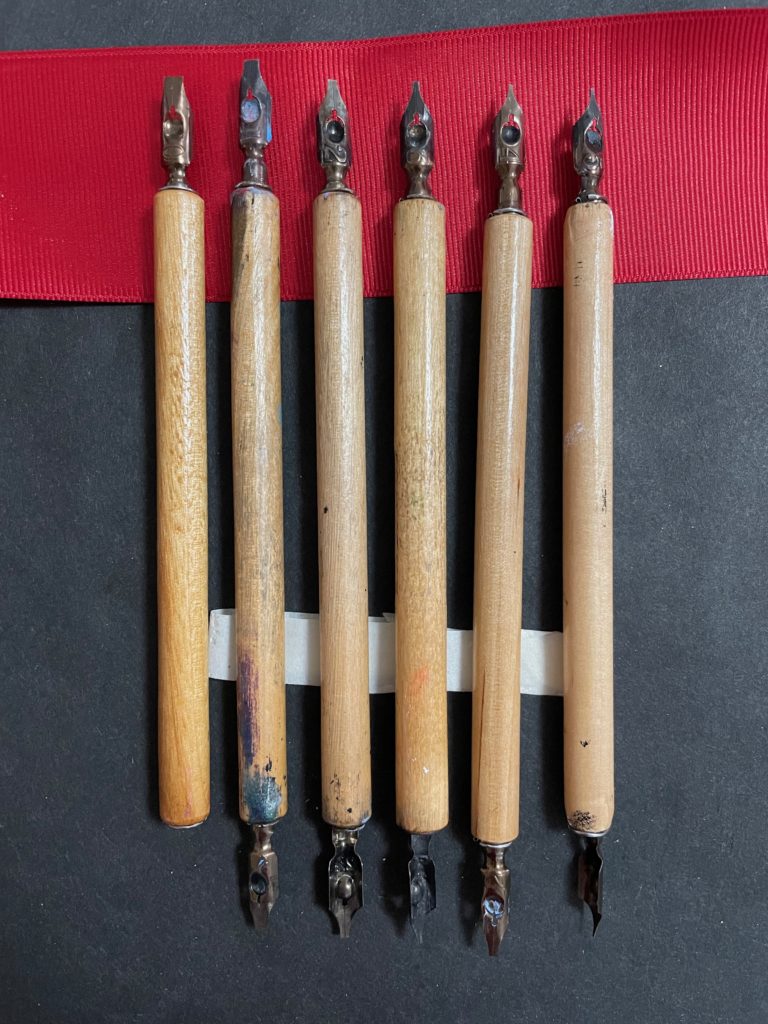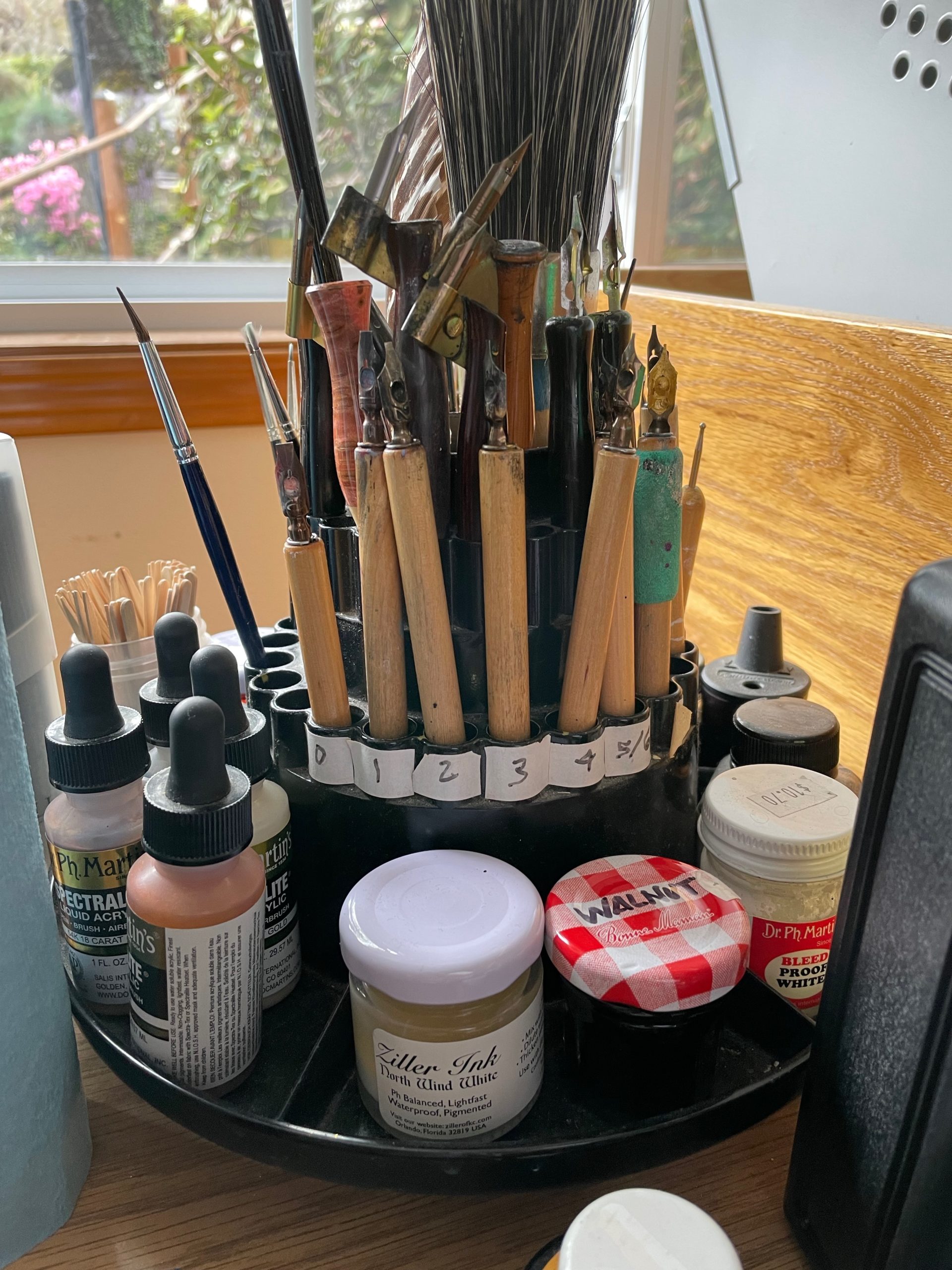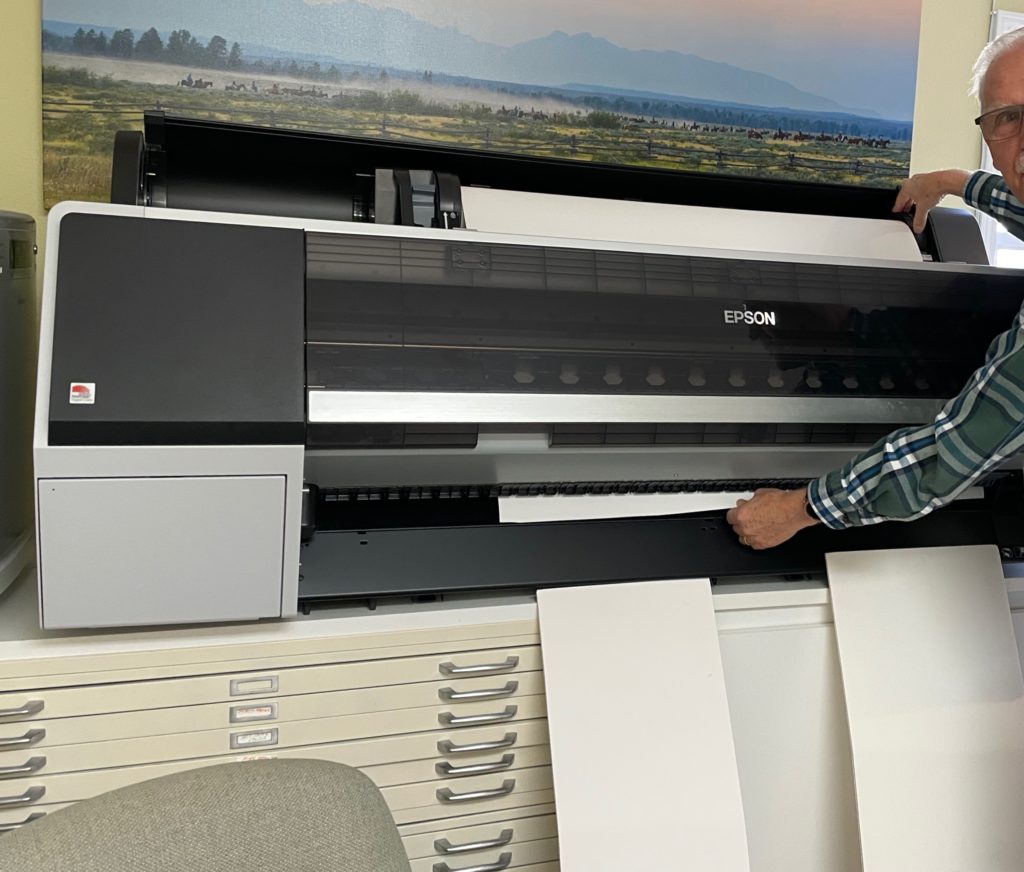Sometimes, I am not able to show what I’m working on for awhile, because the project is being gifted to someone. Now, I can share this project with you. In November of 2021, I had a wonderful visit from Father Nathan and Father Philip, both from Mt. Angel Abbey, Oregon. Father Nathan oversees the art acquisitions at the Abbey. Father Philip oversees the guest house, but is also a calligraphy instructor. Needless to say, we all had a great time getting to know each other! They came to hire me to create 2 Coat of Arms. One to hang at Mt. Angel Abbey and the other to be gifted (July 2022) to Westminster Abbey, British Columbia, which was founded by some Brothers/monks from Mt. Angel, back in 1939.
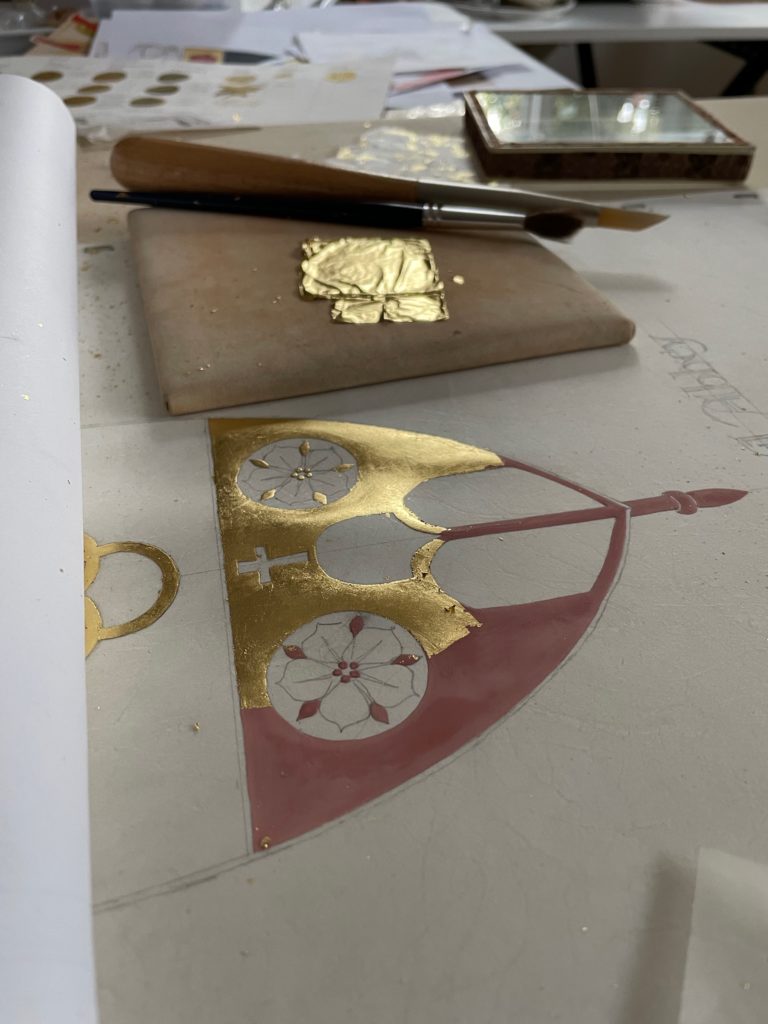
Above and below. These broadsides were created on genuine calfskin (aka vellum) with genuine 23.75 gold leaf, gold powder plus watercolor and gouache. They are about 3′ tall and about 2′ wide (from memory, not exact). In this first picture above, I have already sketched the design on tracing paper and transferred it to the hydrated and stretched/mounted calfskin. The dark pink color is gesso, made from the Italian Cennini recipe made right here in my studio. (If you would like to join a future workshop, sign up on my eNewsletter or email me.) There is quite a process to laying the loose leaf gold. As you can see, I lay down the gold before I paint the color. One of my agate burnishers, used to polish and shine the gold, is also visible in these first two pictures.

In the picture above, you will note that I have laid the gold leaf (beat to 1/300,000 of an inch in thickness) on the decorated letters and ‘In Gratitude’ meant to emphasize their appreciation.

The pictures above and below show the staples that I use to mount the skins to the board. I learned long ago to stretch the skins on a wooden frame, but I didn’t like it when my hand went off the side of the artwork and if the frame sat up too high, so I decided to hydrate the skins and staple them to a board. If they are put in humidity for an hour or so and then stapled, they will stretch as tight as the skin on my banjo….or ‘tight as a drum’ as the expression goes. If I don’t do this, I run the risk of my lines of lettering being a bit ‘wavy’ due to the cockling of the skin.
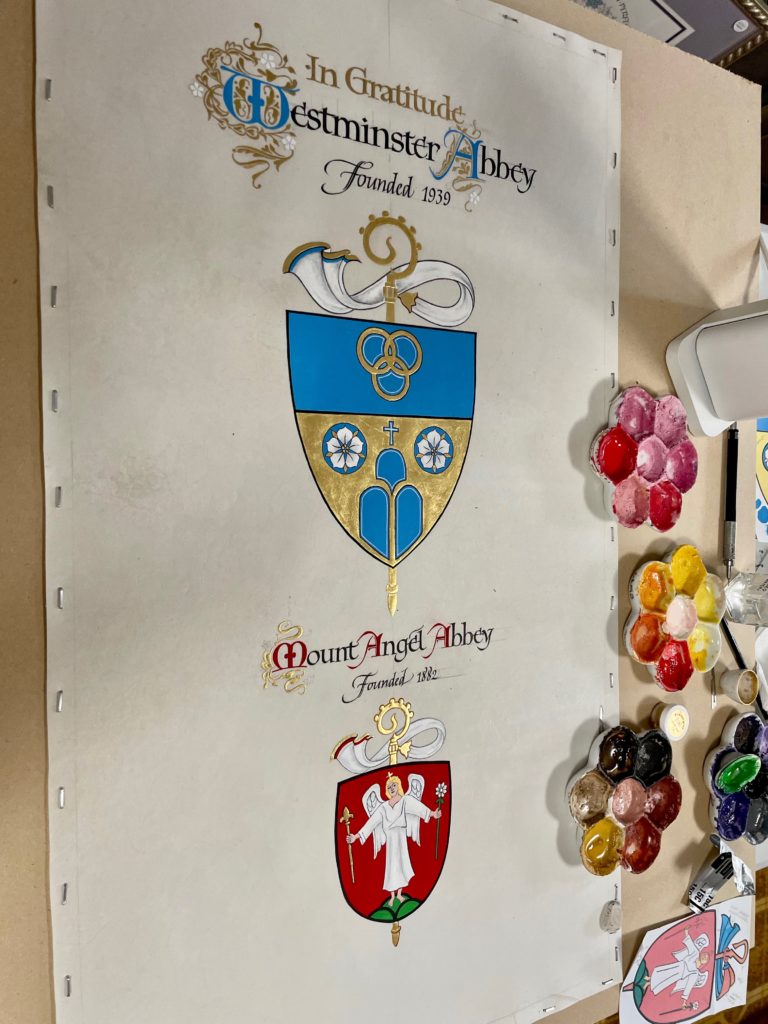
This photo was actually taken from the left side. I rotated it right so that you could see the art upright. It shows the finished art and calligraphy along side my watercolor mixing florets. I followed the already established designs that had been created for the respective Abbey shields, but added some shading for dimension as well as the Veil & Crozier. The crozier also spelled crosier, I learned is carried by the Abbot at Mt. Angel as a symbol of “The Good Shepherd” and his ecclesiastical office. The veil on each shield is symbolic of the sacramental veil.

Below, a close up of one of the decorated letters. The raised gold is obvious and the gold powder lies flat in contrast. (it is liquified so I could paint it on gives a nice contrast inside the W.)

I love the subtle texture in this skin. It was one large one, that I cut down for these 2 documents.


Above you will see how I mount calfskin. Note that calfskin will not lie flat, but can be held taught with the eyelets and threads. I teach this method in my revised Lettering on Vellum workshop. (It is not in the pre-recorded workshop from 2021. This one mainly covers preparing the skin and lettering on it). BELOW: the two hand created images, framed and read for delivery. They have a carved outer frame and an off-white linen mat with a black wood filet. If you visit Mt. Angel Abbey, Oregon, you will be able to see one of them hanging in one of their meeting rooms.


